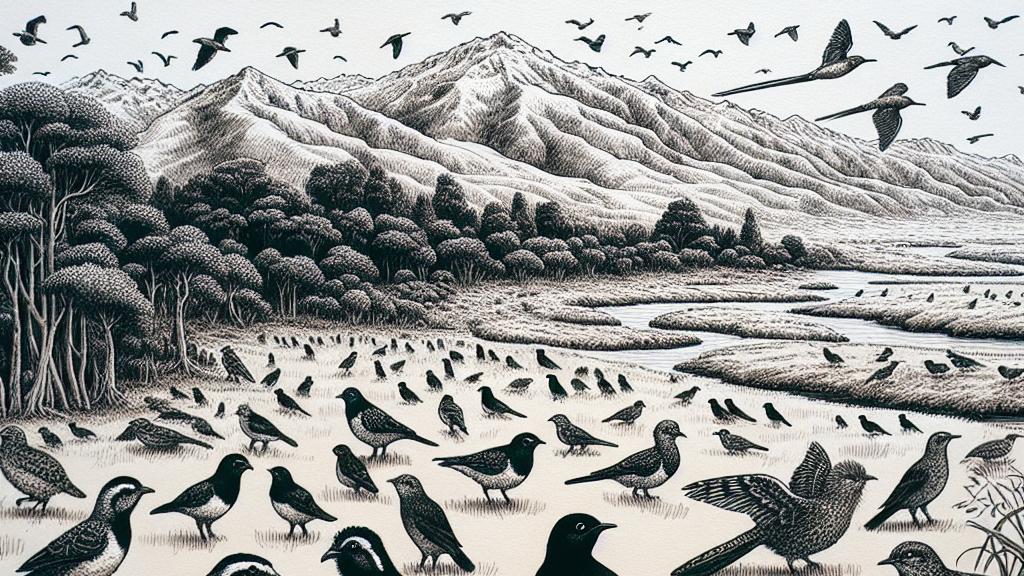How the Ice Age and Invasions Changed New Zealand's Birds
Overview
- New Zealand's bird life has evolved remarkably since the Ice Age, showcasing resilience and adaptability.
- Invasions of new species have not only changed ecosystems but also enriched our biodiversity.
- Understanding these historical patterns is crucial for developing effective conservation strategies today.

The Impact of the Ice Age on New Zealand's Landscape
Imagine wandering through a New Zealand that was once cloaked in vast forests; this was the environment that dominated before the Ice Age. As the climate shifted, these rich forests gradually gave way to expansive grasslands and scrublands. This dramatic transformation paved the way for numerous bird species from Australia, creating a mosaic of migration and adaptation. Research from the University of Otago reveals that during this cold epoch, many beloved native birds, such as the swift and lively fantail and the elegant black silt, arrived and adapted to their new home. The arrival of these invaders forced us to rethink our definitions of what it means to be a 'native' species in this unique ecological landscape!
Challenging Perspectives on Recent Arrivals
Despite their undeniable integration into New Zealand's birdlife, some argue that species like the charming silvereye, which traversed the Tasman Sea in the 1850s, lack authenticity. What a fascinating perspective, but Dr. Pascale Lubbe, a leading researcher in the field, challenges this notion. She highlights that labeling these birds as 'non-native' misses the larger narrative of Aotearoa’s evolving ecosystem. These recent arrivals have not only adapted beautifully but have also enriched our biodiversity. For instance, the silvereye finds joy in the flowering native trees, showcasing an extraordinary connection that bridges species and habitats across oceans. Isn’t it astonishing how interlinked natural systems can be?
The Future of Bird Species in Changing Times
Looking ahead, we stand at a crucial juncture. As climate change and human activities continue to transform the New Zealand landscape, more Australian birds are set to migrate here. This influx could pose serious challenges for our native species, like the flightless kiwi and the endangered takahe. To illustrate, picture this: If these endemic birds disappear, vital ecological roles could be left vacant, allowing invasive species a foothold. Thus, it becomes vital to learn from history; the Ice Age taught us about resilience and adaptation. Modern conservation strategies must consider these historical patterns to safeguard our avian heritage for future generations. Indeed, the Ice Age shaped our birdlife, and our choices today will carve the path for the natural world of tomorrow!

Loading...